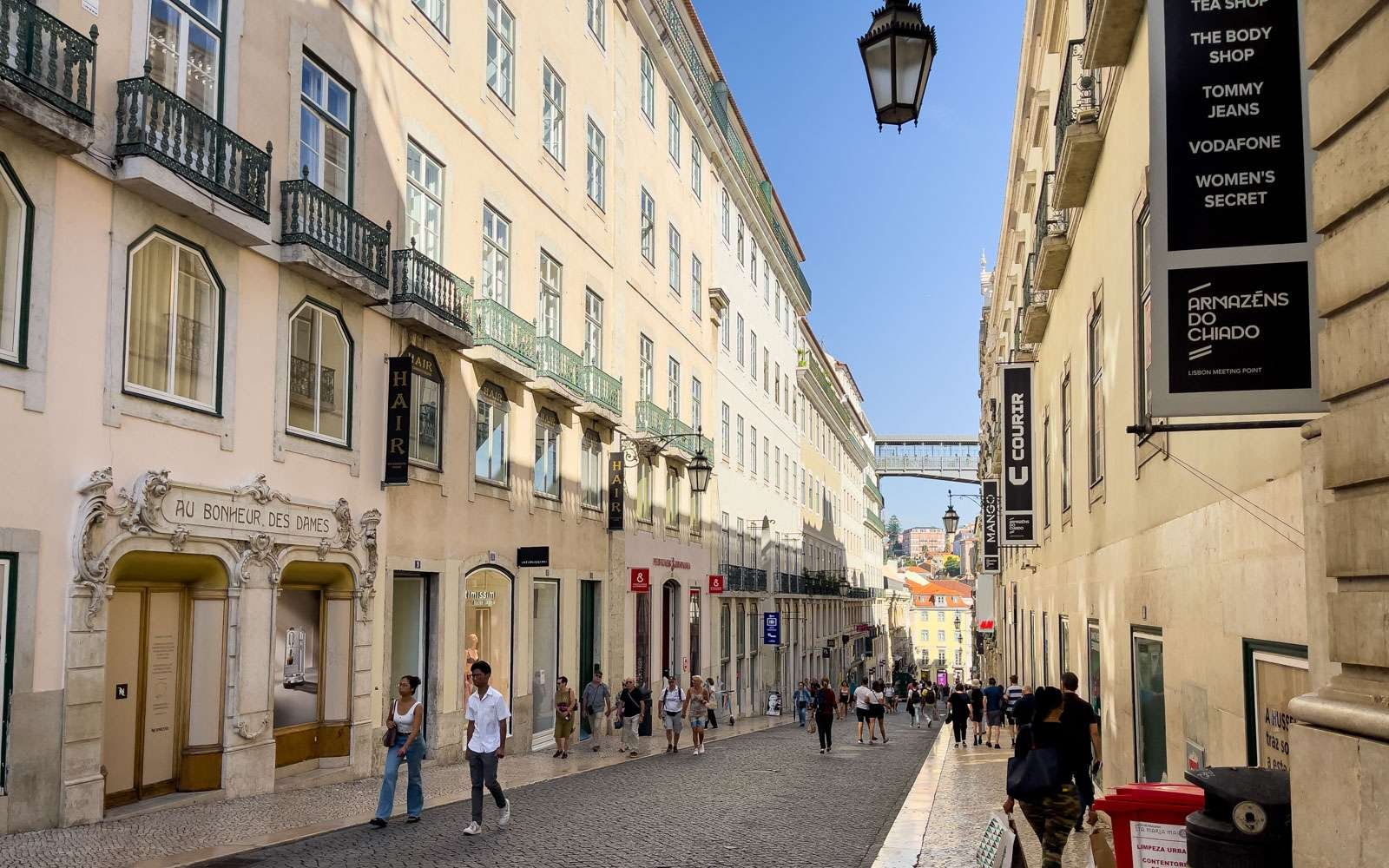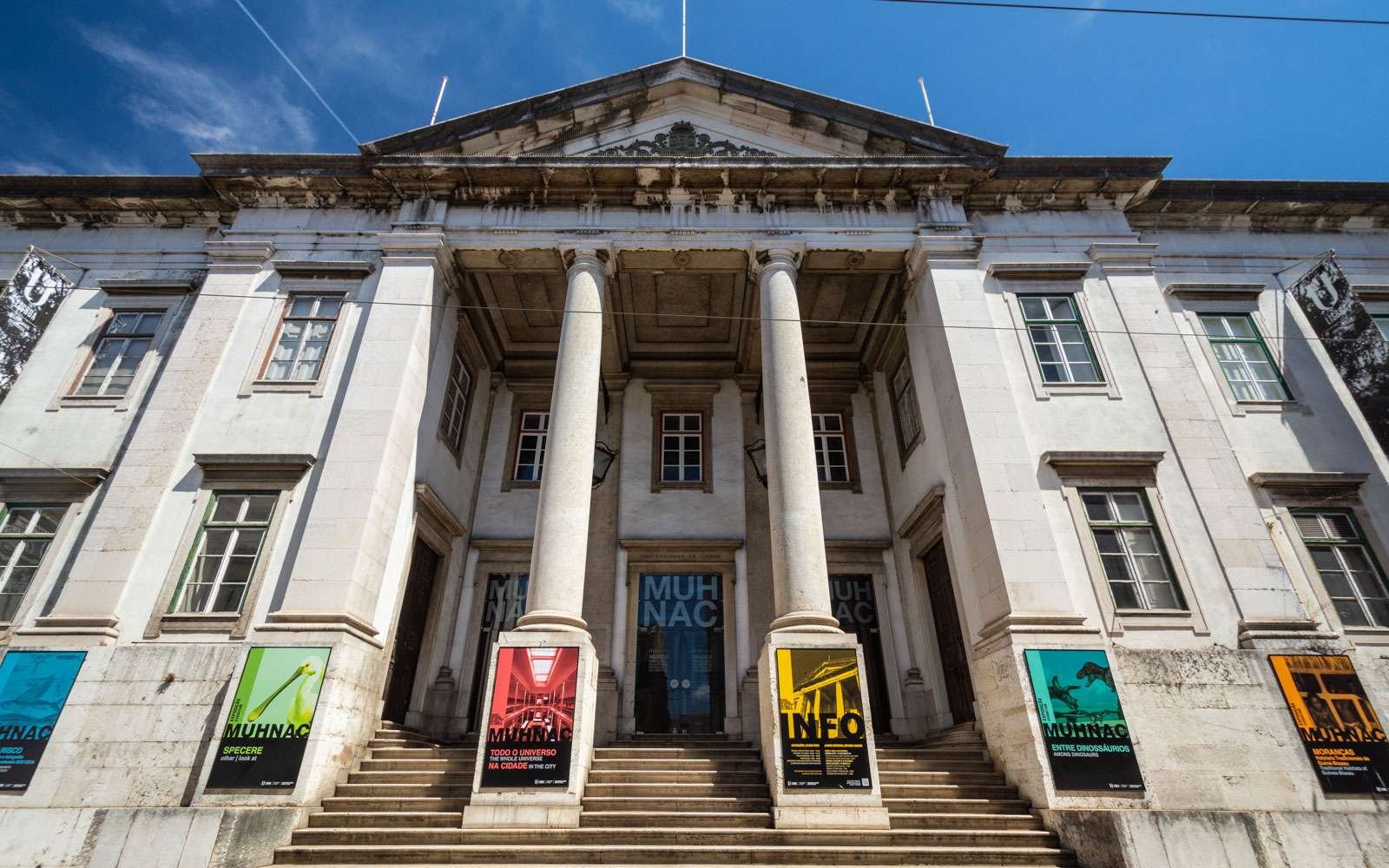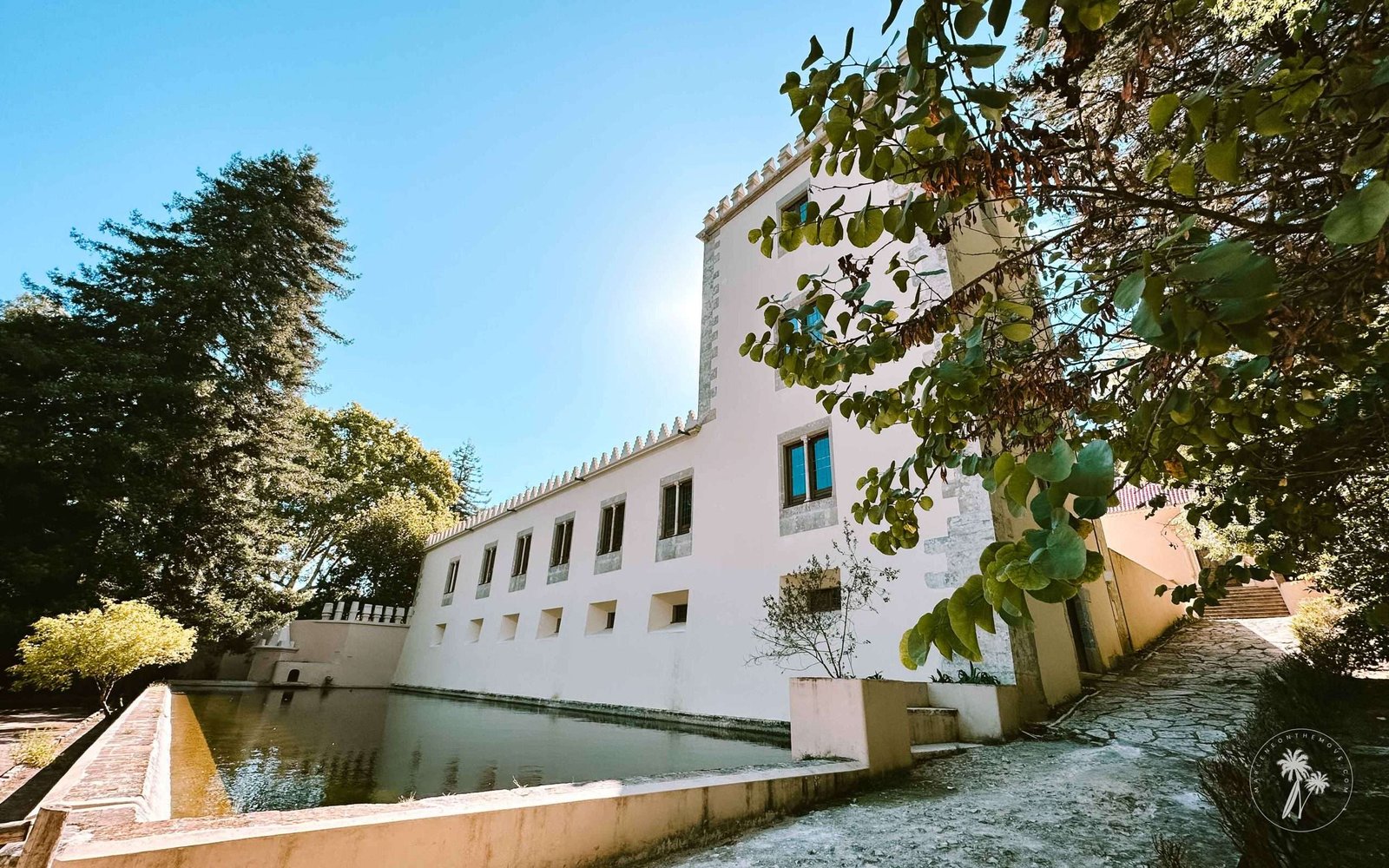
There’s no doubt that Lisbon is already one of Europe’s biggest tourist destinations. Its fame brings millions of visitors to the Portuguese capital every year. Some for the first time, others repeating the experience.
In fact, according to TravelBI, the city recorded around 4 million overnight stays in 2023, an increase of 6% from the previous year.
Having said that, almost every corner of Lisbon’s main neighborhoods has accommodations that suit all tastes.
So, if you’re considering visiting the city, you may wonder: “Where will I stay in Lisbon?”
To help you plan your trip and stay in the best place for what you want to do, I’ve prepared this article with the sights to see and the best hotels in each of Lisbon’s main neighborhoods.
However, bear in mind that it takes work to find cheap accommodation in the capital these days. Be prepared to open your wallet to stay in or near the city center.
Where to stay in Lisbon

What to see in Alfama
Sé de Lisboa – Lisbon’s oldest cathedral boasts beautiful Romanesque and Gothic architecture. You’ve probably seen it in photos and postcards of the city along with the classic Tram 28.
Igreja de Santo António – This church is next to the cathedral and was built on the spot where St. Anthony, Lisbon’s patron saint, is believed to have been born.
Miradouro de Santa Luzia – This is one of the most beautiful viewpoints in the city, with a balcony covered in tiles and bougainvillea and an incredible view over Alfama.
Miradouro das Portas do Sol – Right next door, this observation point has a privileged view over the Tejo River and the neighborhood.
Castelo de São Jorge – This historic castle has walls and gardens to explore. Oh, and don’t miss the 360º panoramic view.
Igreja de São Vicente de Fora – This example of Mannerist architecture has a beautiful cloister and stunning tiles. Look out for the details!
Panteão Nacional – This magnificent church is where some of the most important figures in Portugal’s history are buried, such as fado singer Amália Rodrigues and footballer Eusébio.
Feira da Ladra – Welcome to one of Lisbon’s oldest street markets. It has been held since the 13th century and today is dedicated to selling antiques and vintage goods. It takes place every Saturday in Campo de Santa Clara.
Fado Museum – A tribute to the tradition of fado, with exhibitions on its history and the figures who most marked this musical genre.
Hotels in Alfama
Tandem Palacio Alfama Suites – The modern apartments have a kitchen, which is perfect for extended stays. There’s also a swimming pool and a gym.
Memmo Alfama – Speaking of pools, the one in this boutique hotel is one of the most beautiful in Alfama, with panoramic views over the neighborhood and the river.
São Vicente Alfama Hotel – With just 22 rooms and contemporary decor, this hotel offers a luxury experience in a historic building.
Solar do Castelo – This hotel is located in an old 18th-century mansion where the kitchens of the Royal Palace used to be. Internal courtyards and rooms fit for royalty are within the castle walls.
Santiago de Alfama – This luxury boutique hotel was considered the “Best Urban Hotel in Europe” by Condé Nast Johanses. Housed in a 15th-century building, it has beautiful rooms, a gourmet restaurant, a beauty bar, and an incredible view over the neighborhood.

What to see in Chiado
A Brasileira – This iconic 1905 café frequented by Fernando Pessoa is a must. Take a seat next to the statue of the Lisbon poet on the terrace for the traditional photo, and don’t leave without trying the house coffee.
Livraria Bertrand – The oldest bookshop in the world still in operation is located in the middle of Rua Garrett. Bertrand has been open since 1732, and its history is almost palpable to anyone who enters.
Teatro Nacional de São Carlos – Lisbon’s main opera house, has lovely neoclassical architecture.
Convento do Carmo – The Convento do Carmo was destroyed in the 1755 earthquake and, unlike other buildings in the city, has retained its Gothic ruins. This is where you’ll find the Museu Arqueológico do Carmo.
Elevador de Santa Justa – The iconic 1902 cast iron elevator designed by Raúl Mesnier de Ponsard (Gustave Eiffel’s pupil) connects Chiado to Baixa.
Hotels in Chiado
AlmaLusa Baixa/Chiado: It’s located more in Baixa than in Chiado, but it’s so beautiful that I wanted to put it on the list. The hotel stands out for its mix of modern and traditional Portuguese elements.
Lisboa Carmo Hotel: Located in a historic building overlooking Largo do Carmo, the site of the Portuguese Revolution. It has 46 rooms, including family rooms.
Montebelo Vista Alegre Lisboa Chiado Hotel: This new hotel is known for its connection with the Portuguese porcelain brand Vista Alegre, which stands out.
Hotel do Chiado: Located in the Armazéns do Chiado, it has rooms with private terraces and panoramic views of the castle hill. Go up to the 7th floor to be enchanted by Lisbon’s landscape.
The One Palácio da Anunciada: This luxury hotel, housed in a 1533 palace, offers an elegant setting, a spa, and an incredible swimming pool.

What to see in Bairro Alto
Miradouro de São Pedro de Alcântara – Another viewpoint with panoramic views over the city and the Tagus, ideal for relaxing and enjoying the scenery.
Igreja de São Roque – It’s one of the oldest churches in Lisbon. Its simple, austere exterior contrasts with its gilded, marble, and tiled interior.
Elevador da Glória – One of Lisbon’s iconic elevators connects Baixa to Bairro Alto and is a great way to climb the hill. It also gave its name to one of the most famous songs (from 1987) by Lisbon band Rádio Macau.
Elevador da Bica – This elevator helps you get up from Rua de São Paulo, next to Cais do Sodré, to Bairro Alto, following one of the most picturesque streets in this neighborhood. Bica is also one of those places that transforms itself at night.
Convento dos Cardaes – A historic convent that survived the 1755 earthquake and is known for its tiles and sacred art.
Teatro da Trindade – This historic theater features plays and concerts.
Museu da Farmácia – Learn about the history of pharmacy, from ancient times to the present day, at this museum near the Miradouro de Santa Catarina, another place to visit.
Bars and Restaurants – Bairro Alto is famous for its nightlife, so it’s worth visiting the traditional bars, taverns, restaurants, and Fado houses.
Hotels in Bairro Alto
Selina Secret Garden: A creative and modern space with affordable rooms and coworking areas, ideal for digital nomads.
Solar dos Poetas: This guest house in Praça Camões stands out for the classic charm of its historic building and its stunning decor.
Palácio Ludovice Wine Experience Hotel: A luxurious restored palace centered on a wine experience.
The Lumiares: This five-star hotel in the heart of Bairro Alto offers elegant apartments and incredible views over the city.
Bairro Alto Hotel: Also in Praça Camões, this hotel, designed by Portuguese architect Souto Moura, has a design that reflects the bohemian soul of Bairro Alto.

What to see in Graça
Miradouro da Senhora do Monte – Here, you’ll find a beautiful panorama of Lisbon, with the castle, the river, and the city.
Miradouro da Graça – Another iconic viewpoint and a favorite among Lisboners, ideal for enjoying the sunset while sipping a coffee on the terrace.
Igreja da Graça – This church is next to the Miradouro da Graça and is one of the city’s oldest religious buildings. Go inside to see the tiles and the gilded altar.
Vila Berta – A village within a village! Here, you’ll see buildings from the early 20th century, with colorful façades and decorated balconies, all in a very peaceful setting.
Jardim da Cerca da Graça – This green space between Graça and the Castle is ideal for a picnic or relaxing.
Hotels in Graça
Tings Lisbon: A cozy hotel, ideal if you’re looking for a more relaxed stay.
Albergaria Senhora do Monte: The rooms are simple, but the view over Lisbon is worth everything.
Dona Graça: A very elegant and exclusive aparthotel with white and wood decor and a private garden with a swimming pool.

What to see in Príncipe Real
Jardim do Príncipe Real: Lisboners often visit this green space for relaxation and socializing. It’s also known for the organic produce market every Saturday morning.
Mãe d’Água das Amoreiras: Enter this impressive 18th-century underground water reservoir, now converted into a cultural space, to learn about Lisbon’s water history.
Museu de História Natural e da Ciência: If you love science and nature, this museum has exhibitions on natural history, geology, and paleontology.
Jardim Botânico de Lisboa: An incredible garden with a wide variety of plants and trees.
Hotels in Príncipe Real
Príncipe Real Guest House: In a neighborhood known for its aristocratic past, this affordable option has a homely atmosphere and is an excellent location for exploring the city.
Independente Príncipe Real: This boutique hotel is another trendy place with a bohemian spirit. It has an artistic atmosphere and unique design. There’s also a dormitory area to help with your travel budget.
1869 Príncipe Real: An elegant bed & breakfast with rooms and suites with contemporary decor and a cozy atmosphere.
Casa Olivier: The detailed decor of this charming hotel overlooking the Príncipe Real garden is a trip in itself.
The Vintage: This is a sophisticated hotel with a vintage design, known for its rooftop bar and views over the city.
Memmo Príncipe Real: Some people come here just for the restaurant and cocktail bar, but this luxury hotel is much more than that. It offers elegant rooms and a pool with a privileged view.

What to see in Avenidas Novas
Campo Pequeno: This former bullfighting arena has been converted (and rightly so!) into a concert hall, where concerts and events are held, as well as a shopping center.
Fundação Calouste Gulbenkian: This important cultural center has a vast art collection, temporary exhibitions, and concerts. You can also visit the beautiful garden with lakes and sculptures.
Parque Eduardo VII: Near the Marquês de Pombal traffic circle, you’ll find the city’s most emblematic park. It hosts events such as the Lisbon Book Fair or Wonderland at Christmas, and it’s ideal for walks and picnics.
Estufa Fria: Located in Parque Eduardo VII, this greenhouse is beautiful, with an impressive diversity of tropical plants.
Hotels in Avenidas Novas
Ibis Lisboa José Malhoa: This practical and affordable hotel is close to Praça de Espanha and ideal for a convenient stay.
Turim Saldanha Hotel: In Saldanha, this hotel has modern rooms and is near to public transport.
H10 Duque de Loulé: A boutique hotel that combines charm and modernity, offering stunning views from the terrace. Also noteworthy is the tiled decoration in the lounge area.
Hotel White Lisboa: An elegant and contemporary space famous for its minimalist decor with a touch of sophistication. Oh, and it has a rooftop pool.
Sublime Lisboa: Located in the Amoreiras area, this luxury hotel combines the historic beauty of its building with modern comforts. It also has a spa and restaurant.
EPIC SANA Lisboa Hotel: This chain hotel stands out for its contemporary design, spa, and rooftop pool.

What to see in Belém
Mosteiro dos Jerónimos: This is the crown jewel of the neighborhood and a magnificent example of Manueline architecture. Classified as a UNESCO World Heritage Site, it refers to the Age of Discovery. It’s famous for its church, which houses the tombs of the navigator Vasco da Gama and the poet Luís de Camões.
Torre de Belém: This fortified tower by the river is also a UNESCO World Heritage Site and marks the place from which ships set sail to explore new territories during the Portuguese Discoveries.
Padrão dos Descobrimentos: This caravel-shaped monument pays tribute to the Portuguese navigators and their conquests. The statues in it represent important figures from the Age of Discovery.
Centro Cultural de Belém (CCB): A multifunctional cultural center that hosts exhibitions, concerts, and plays, as well as impressive contemporary architecture.
Palácio de Belém: This is the official residence of the President of the Portuguese Republic. You can see the changing of the guard, visit the museum, and explore the beautiful gardens.
Jardim Botânico Tropical: Close to the presidential palace is another green area ideal for walks. It has a rich collection of plants from different parts of the world.
Museu dos Coches: This unique museum has a remarkable collection of historic coaches and shows the evolution of this form of transportation over the centuries.
MAAT-Museum of Art, Architecture and Technology: This contemporary cultural venue explores the intersection between art and technology, presenting innovative exhibitions.
Pastéis de Belém: Don’t be intimidated by the queues at the door and try the famous custard tarts from the Fábrica dos Pastéis de Belém, next to the Mosteiro dos Jerónimos.
Hotels in Belém
Wine & Books Lisboa Hotel: A boutique hotel offering a unique experience for lovers of wine and literature, with elegant décor and a carefully chosen selection of wines.
Jerónimos 8: Located near the Mosteiro dos Jerónimos, this hotel offers modernity with a touch of history and stands out with its contemporary design.
Altis Belém: This hotel is known for its spa, swimming pool, and gourmet restaurant, offering a unique experience next to the Tejo River.
NAU Palácio do Governador: Housed in a former palace, this five-star hotel combines history and modernity. It provides a refined atmosphere and a privileged location close to Belém’s main attractions.

What to see in Parque das Nações
Oceanário de Lisboa: The Oceanário is one of the world’s largest indoor aquariums and home to countless marine species, including seals and sharks.
Pavilhão do Conhecimento: This interactive science and technology museum offers educational exhibitions and activities for the whole family.
Teleférico: The cable car connects the Pavilhão do Conhecimento and the Jardim Garcia de Orta and offers incredible views over the river and Parque das Nações.
Jardim Garcia de Orta: A beautiful garden with play areas, themed parks, and fountains, perfect for relaxing or having a picnic.
Path along the Tejo: This extensive promenade along the river is perfect for walking, jogging, or cycling.
Gare do Oriente: Designed by Santiago Calatrava, the modern railway station has impressive architecture you’ll want to see even if you’re not taking the train.
Hotels in Parque das Nações
Moxy Lisboa Oriente: A modern, relaxed hotel with a vibrant, youthful atmosphere, rooms with contemporary design, and a vivacious bar in the lobby.
Myriad By Sana Hotels: This luxury hotel, located inside the Vasco da Gama Tower, has a Michelin-starred restaurant, a spa, and privileged views. You can see a red piano in the lobby, signed by Elton John.
The Homeboat Company: What about sleeping on a boat? This accommodation option offers an original experience and the chance to enjoy life on board.
Now that you know the best neighborhoods and where to stay in Lisbon, how about it? Where would you like to base yourself on a visit to the beautiful Portuguese capital?
Like the post? PIN it and save it for later







